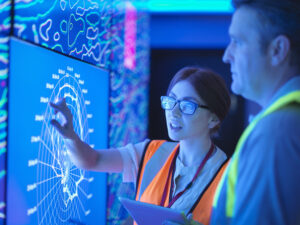
Energy-smart buildings: Use IoT to reduce your electric bill
Connectivity and digital services are affecting the way buildings are built—and operated. Buildings are becoming smarter, not just more efficient. They can now also enable services that make people more productive. Today, we can use digital technologies to optimize building environments for the businesses and people inside them. With rich data and high-performance analytics, manufacturers and other facility operators can use ambient intelligence, context sensitivity, predictive management, and automated operations to support energy-smart buildings (ESB).
Expertise began on the Microsoft campus
The Microsoft Puget Sound campus near Seattle had grown to 145 structures and 15 million square feet of office and lab space for almost 60,000 people. Campus buildings range from 40 years old to brand new, with multiple, disparate HVAC systems and labor-intensive reporting. As buildings age, efficiency decreases by about 20 percent every five years, and it was hard to manage campus infrastructure or maintenance as a whole system. The result was that it took more than 50 megawatts an hour and USD$55 million a year to run the whole campus.
It would have cost $60 million to retrofit and integrate the building systems, and the logistics would have been nearly impossible. We had to change our approach to energy saving, which relied too much on manual work processes and reactive services. We turned up the heat if people said they were cold, and sent a technician if they said it wasn’t working.
We needed to transform our energy management with automated, proactive services.
Put the IoT and deep analytics together…
HVAC systems consume more energy when they don’t function properly: a filter is clogged, or the bearings on a fan are worn. To find those things quickly in a large system, you need real-time data. So at Microsoft we launched a project to collect data from third-party sources and manufacturer-installed sensors in existing building equipment across the campus and implemented a solution from Iconics to standardize, manage, analyze, and visualize the data.
We defined a set of rules to monitor faults and forecast the cost of energy related to the fault. By detecting and analyzing faults (vs. failures), we can understand the system holistically, make better decisions, optimize resources, and prioritize maintenance.
Building engineers can track what’s happening, down to the actuators and flow-rate sensors in cooling units; find errors before they become failures; run remote diagnostics before they send a technician; and manage buildings for optimal operation within the overall campus system—not just the right room temperature. Microsoft used digital solutions and services to detect the undetectable, and provide better services to its employees with less interruption.
…with end-to-end design, delivery, and adoption services
Since we launched ESB and other energy conservation measures, the Microsoft Puget Sound campus has been consuming about 20 percent less energy. Almost half of all faults are corrected within 60 seconds. And Microsoft has begun to expand this solution across the world on our other campuses.
Microsoft Services combines the ESB expertise that we forged on our own campus with end-to-end design, delivery, and adoption services to help customers integrate energy management in their facilities and on their factory floors.
Learn how to transform manufacturing
with Microsoft Services




